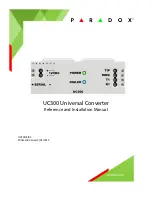
User Manual
EM303A General Purpose Inverter
12
1.2.7
Low Noise Design
Due to the high frequency harmonic wave with the output of inverter, the motor
generates the electromagnetic noise inevitably. Usually, electromagnetic noise can
be lowered by increasing carrier frequency, which, however, in turn makes the
inverter overheat, and the rated output current is required to be decreased by 5%
for every additional 1 kHz in carrier frequency. EM303A achieves low noise
operation with low carrier frequency by carrier frequency regulation.
1.2.8
Current Limit
When inverter is running, if acceleration/deceleration time is too short or the load
becomes heavier, the output current of inverter may exceed the permitted limit. If
current limit is enabled, inverter will automatically decrease its output frequency
to keep the output current limit unchanged. When output current is less than the
current limit, it runs as per regular input command. This function is applied to
V/F control mode only. For other control modes, the current is automatically
regulated.
1.2.9
Energy Autosaving
When motor is idling or with light load, EM303A will properly regulate its output
voltage for energy saving purpose.
1.2.10
Constant Power Output
With the same load, output current will increase as the input voltage of inverter
decreases. Meanwhile, if constant power output is active, the inverter will
automatically calculate its real-time output power and work at maximum power
permitted.
1.2.11
Automatic Voltage Regulation (AVR)
When the input voltage fluctuates, the output voltage remains unchanged
basically, and V/F value keeps constant.
1.2.12
Dynamic Overvoltage Stall
Effectively avoid bus voltage accumulation by real-time detecting voltage of DC
bus and regulate overvoltage points dynamically.
1.2.13
Dynamic Brake
When motor decelerates or runs with potential energy load, the voltage of DC bus
will rise due to energy feedback, and such voltage is called as rebounding
overvoltage. In order to make motor brake quickly within given deceleration time
while the inverter will not perform overvoltage protection, and rebounding
braking resistor or braking unit can be used to consume this energy, such brake is
called as dynamic brake.
1.2.14
Fault Autoretry
During operation of inverter, faults such as undervoltage (instant power failure
but resume immediately), overvoltage, overcurrent, and overload may occur. If
faults autoretry is active, inverter will automatically try to restart after a setting













































